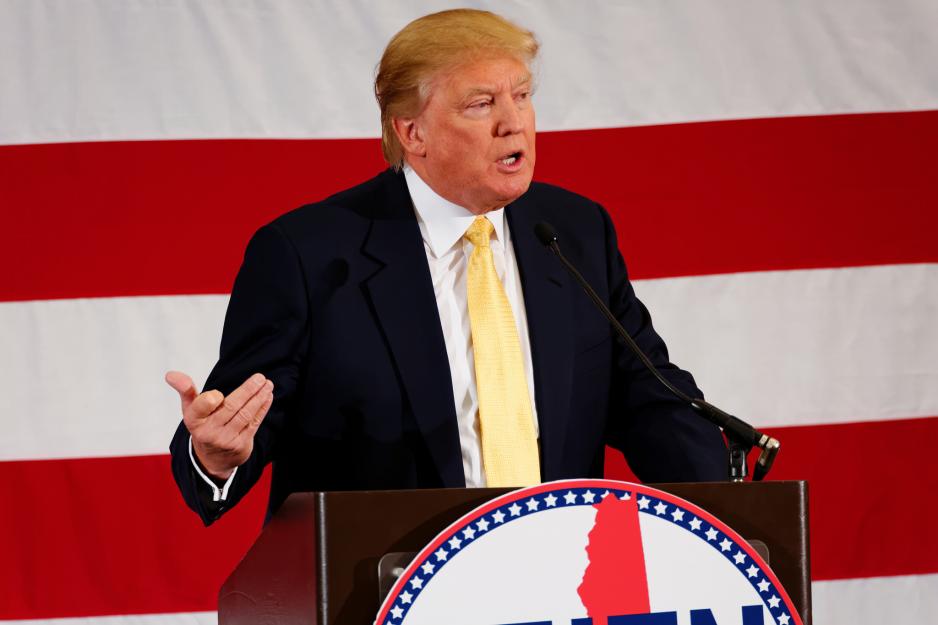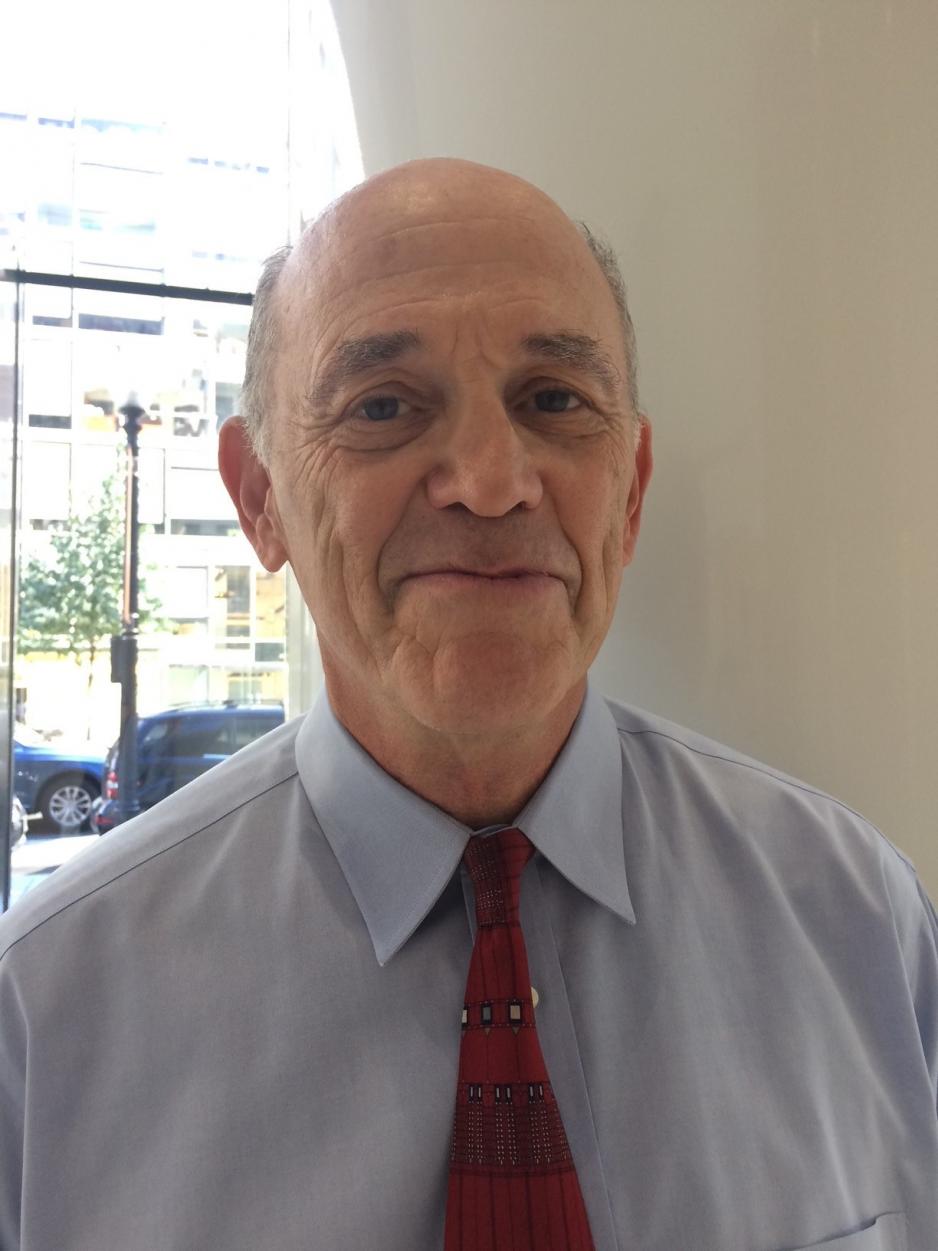Solberg meets Trump: Arctic on the Agenda

Norwegian PM Erna Solberg meets US President Donald Trump after one of the coldest weeks ever in Washington D.C. If climate becomes an issue, it may be rather cool before the Oval Office fireplace too.
When Erna Solberg meets with President Donald Trump in the White House this afternoon, the High North is expected to receive considerable attention. Security policy and the relationship with Russia will be the main topics of conversation. The Norwegians have also announced that the climate issue will be included in the conversation, however, that is not reflected in the White House press release. Climate advisors in Washington are curious about the outcome, and hope that the prime minister sticks to her word:
- We know that the climate changes in the Arctis is a pre-cursor of what will happen globally. Still, the real crisis will not be discussed. That is a tragedy, says Rafe Pomerance.
- I will be very surprised if it comes up. But I hope Solberg will bring it up.
Alaska = Energy
The Trum administration has for the past few weeks looked north to a higher extent than before. When Trump signed a major tax deal last December, with tax relief that the Democrats argued that the USA cannot afford and the Republicans argued would be covered with increased growth in business and other future wins, the decision to open up the Arctic National Wildlife Refuge in Alaska, the USA’s largest wildlife reserve, was included in the text.
According to calculations from the Republicans in congress, the ANWR holds oil reserves worth about a billion US dollars. These reserves have been out of reach for the oil companies for 40 years, and Trump has promised them access ever since his election campaign. A series of other protective measures from the Obama administration have also been changed; however, they are now challenged in court.
There is, nevertheless, strong doubts about whether oil exploration drilling will commence in the foreseeable future. With the drop in oil prices, Alaska is less interesting for the oil business than before, with its high costs and challenging environment.
Focus on economic development
For the Trump administration, development and facilitation of business is at the centre of its High North vision.
- Economically developing the American Arctic will be key to this administration, says Magnus Nordenman.
- Further economic development and access to the Arctic will likely be of high interest to the White House.
Sherri Goodman, Senior REseracher at the Woodrow Wilson Center and former Deputy Undersecretary of Defense, also points at business initiatives being decisive for gaining an audience with Trump.
- This Administration is interested in private sector investment including energy, which could also include renewable energy, telecommunications, and education, she says.
A proposal last week suggests opening up for oil exploration not just in the High North, but off large areas of the US coast, including exploration drilling along almost the entire Alaskan coast. Many consider this development an opportunity to bring new revenues to a state struggling with an enormous budget deficit. Others consider it a nature disaster waiting to happen. The Exxon Valdez incident in 1989, the second-largest US oil disaster ever, is still fresh in the memory of many, in particular along the Alaskan coast. Trump’s proposal is currently on hearing here.
Arctic policy?
Many have warrented a more coherent Arcticpolicy from the Trump administration. Even though Trump himself has never expressed much interest in or knowledge of the High North, many have considered Secretary of State Rex Tillerson a spokesperson for the significance of the Arctic, with his background from the oil industry and vast knowledge of the High North. However, Tillerson has not been very visible in shaping politics and has to face media predictions about his retirement on a daily basis. And the State Department is at the end of its ropes: Experts have been fired, resigned or retired en masse, and Tillerson lacks major parts of the top echelons, the people who normally would secure both policy shaping contributions and execution thereof.
- US Arctic policies established during the Bush and Obama Administration are still in place at the present time. Each US agency is continuing with the Arctic strategies they have been pursuing, even if there is not a designated White House official with Arctic or High North responsibilities, she says.
Rafe Pomerance, however, disagrees.
- Even though the work continues ‘under the radar’ some places, there is little of significance happening when the issue area lacks attention from the top. Everything touching even remotely on issues of climate change is very sensitive to the White House, and Tillerson has not been willing to step up and take responsibility, Pomerance says.
Magnus Nordenman reminds us that one can see the outlines of an Arctic policy from the Trump administration.
- There is a Trump administration Arctic policy emerging, and it is of one engagement, in its own way. Trump is prodding the government to move forward on new ice breakers for the coast guard, and has lifted some of the restrictions on energy exploration in the US arctic. Economically developing the American Arctic will be key to this administration, says Nordenman.
What will Solberg say?
Many in Washington’s Arctic community look forward to the visit from the Norwegian prime minister and many also hope she will raise Arctic-related issues that do not appear on the White House’s wish list.
Sherri Goodman has no doubts about how she would advise Solberg to start:
- I would remind the President that the US is an Arctic nation, and that it has an opportunity to lead in the sustainable development of this region by collaborating with important allies like Norway, and the other Nordic nations, and by investing in the key capabilities the US will need to operate safely and securely in a changing Arctic: namely, improved infrastructure, maritime capabilities, telecommunications, and energy, to include the renewables that will help the people of Alaska as well as others. PM Solberg should share her approach for working with the Russians in the Arctic, and for cooperating on search and rescue contingencies, that will be increasingly needed in this region, she says.
Magnus Nordenman also advises Solberg to emphasize cooperation with Russia.
- I would make two points:
1. Norway also believes in the many economic opportunities that exist in the North American and European Arctics. However, let's stay focused on finding sustainable development models that take into account the impacts on both the environment and local populations.
2. The Arctic Council needs US engagement and leadership. It is one of the few areas left where the US and the other Arctic nations can constructively engage with a Russia that must be deterred elsewhere., he says, and adds that practical proposals for cooperation are likely to do better, rather than broad statements or common views.
The PM meets President Trump in the White House at 2 p.m. local time, i.e. at 20:00 hrs CET.
Prior to her meeting with President Trump, PM Erna Solberg is giving a talk at the Brookings Institute in Washington. You can follow her talk and the following discussion from 16:00 hrs CET after registering here.
Les artikkelen på norsk



